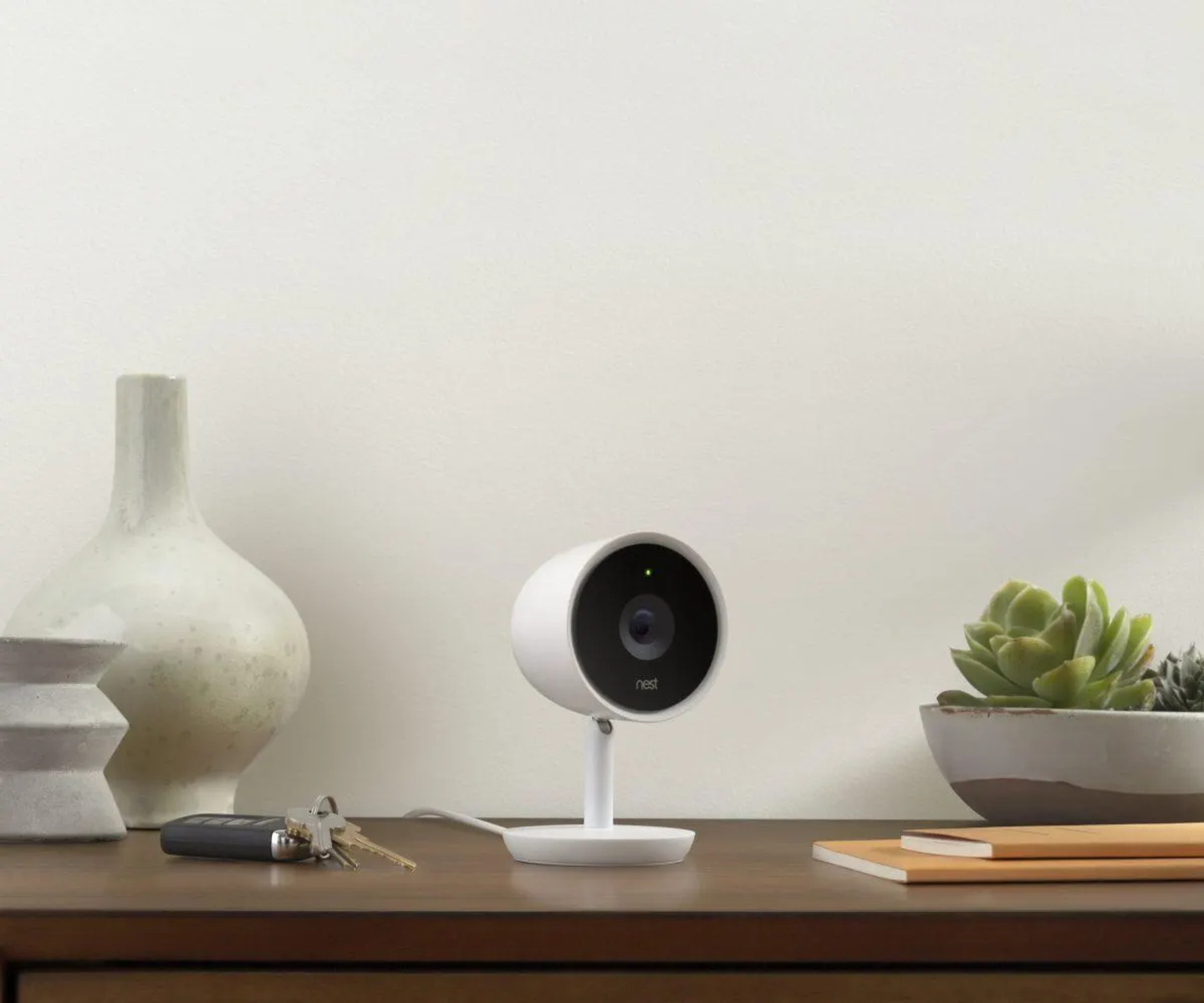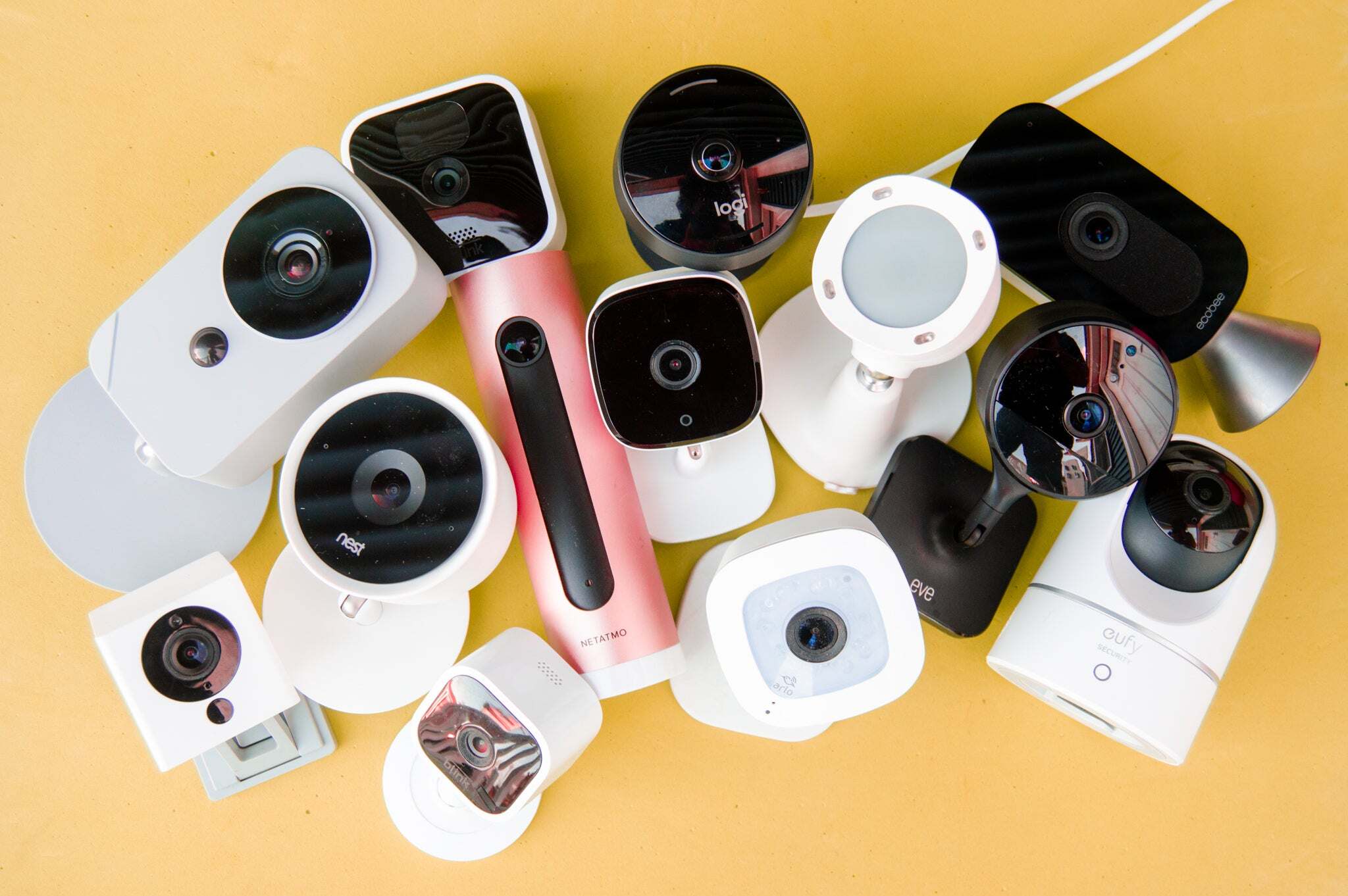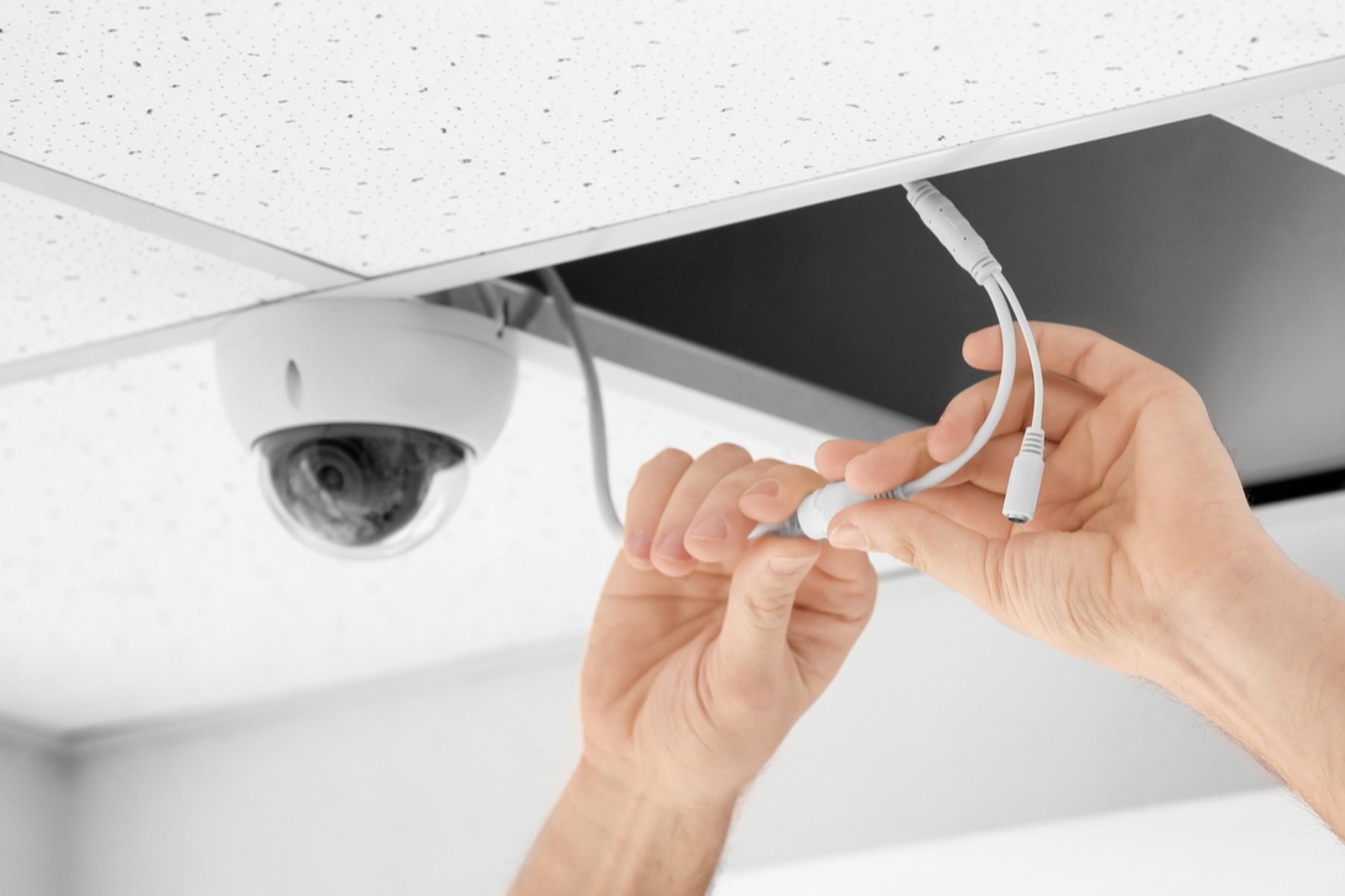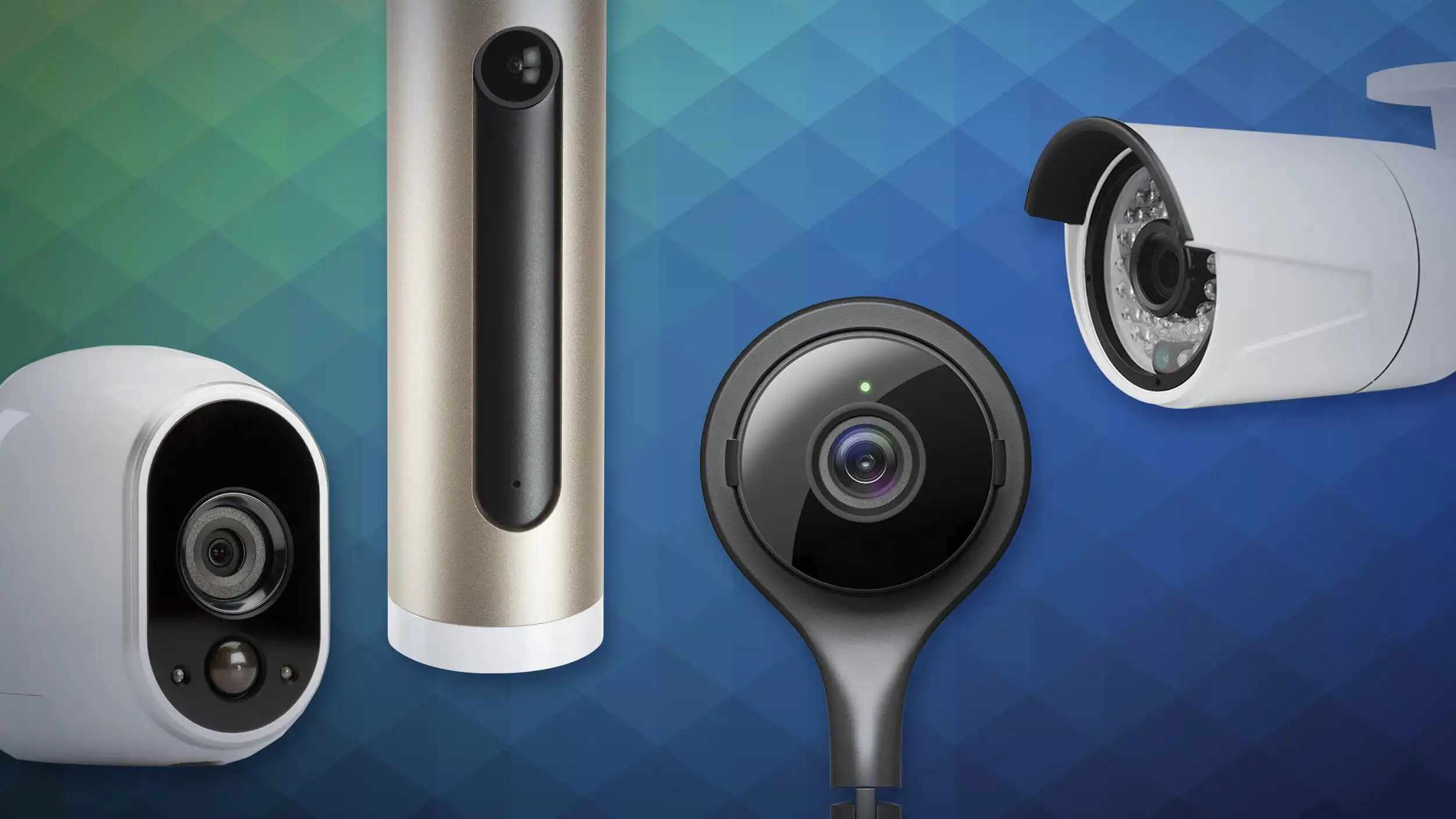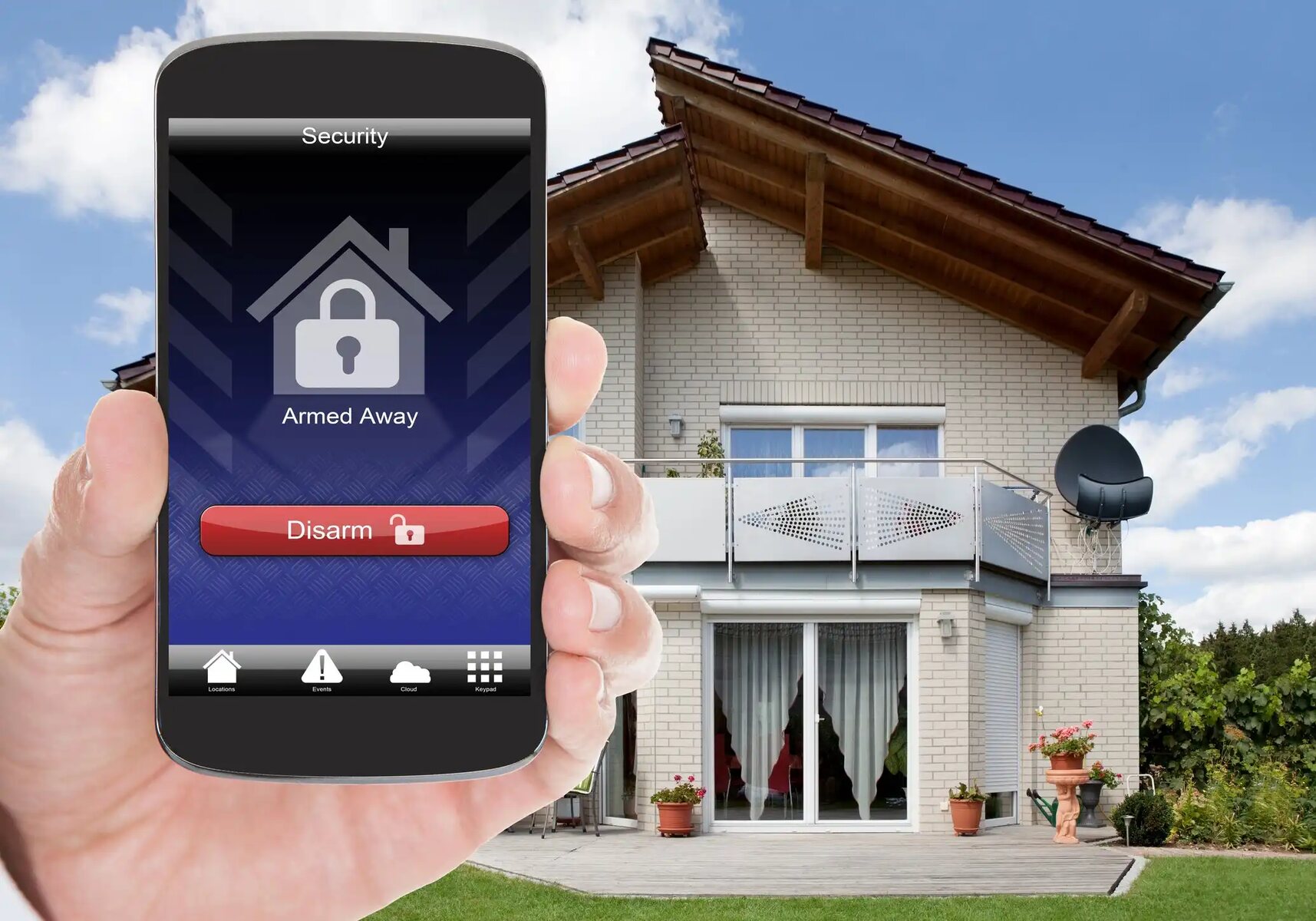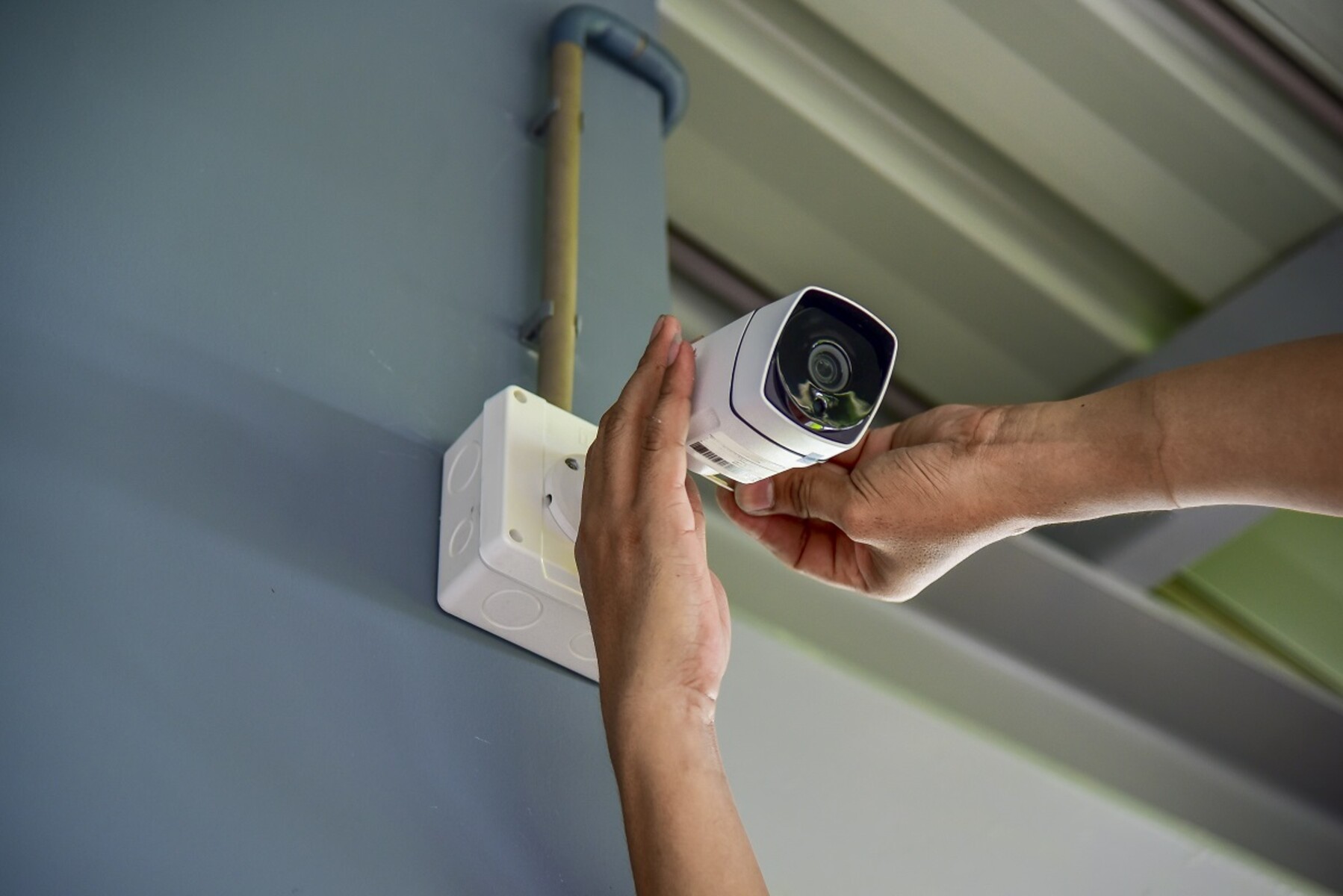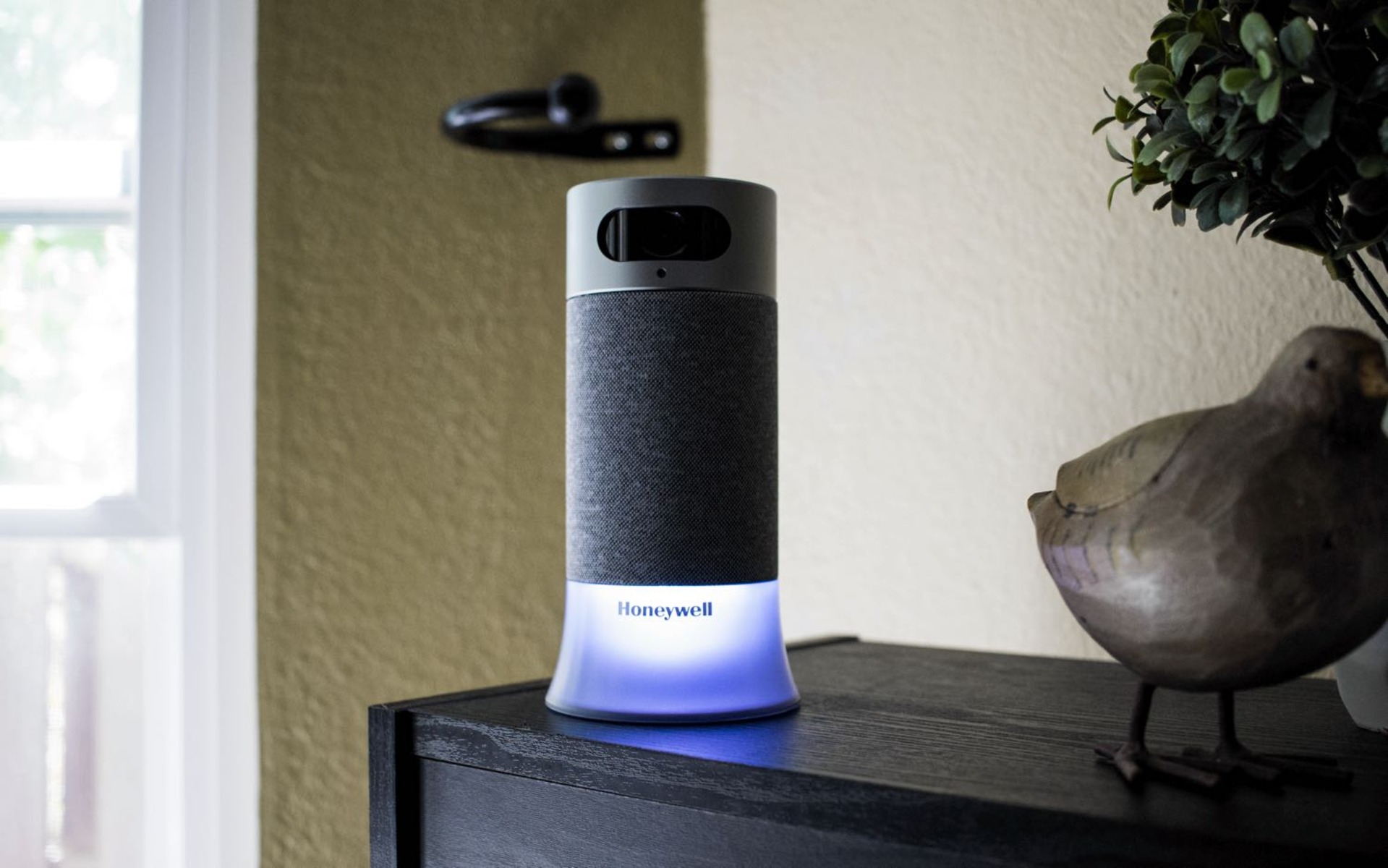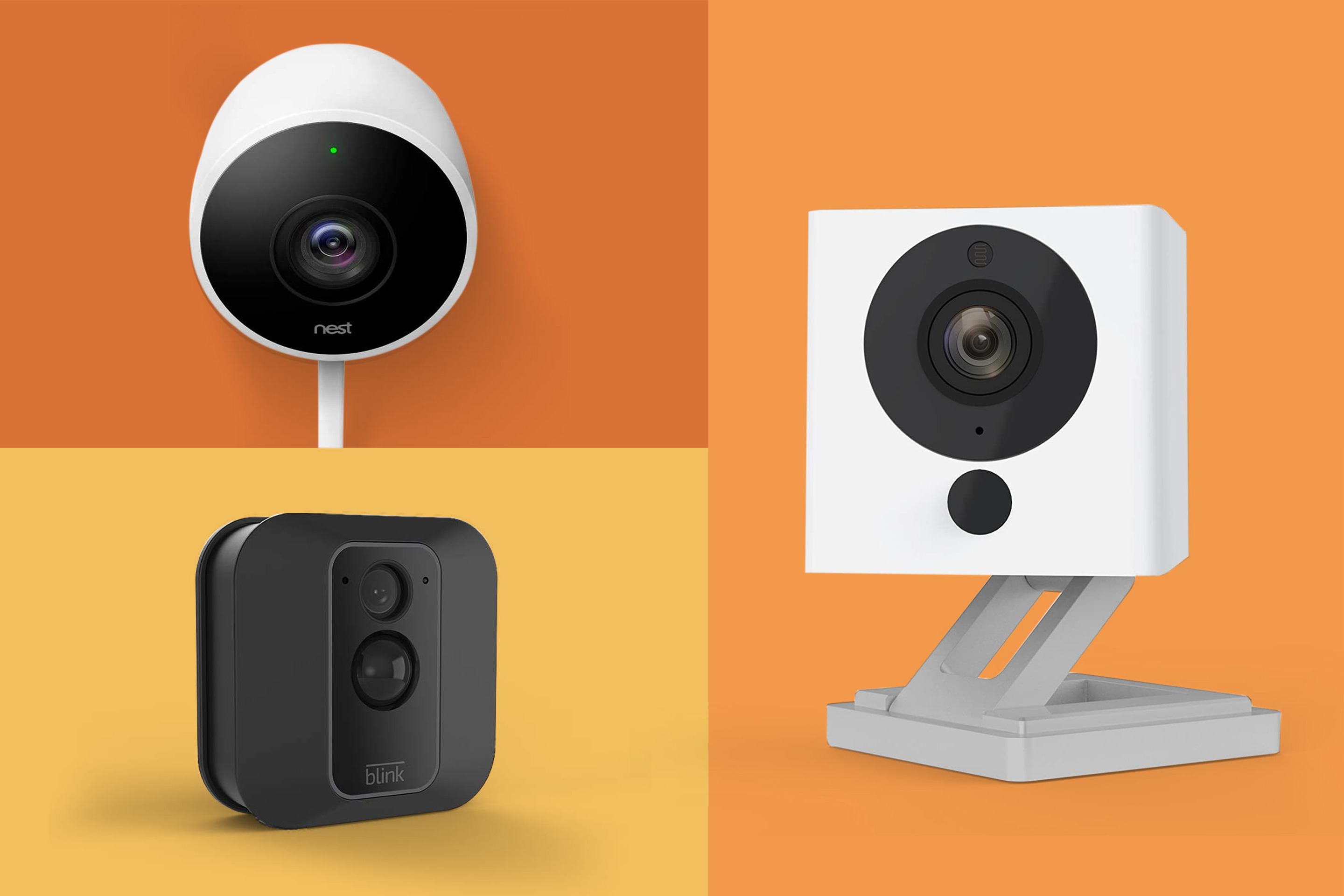Introduction
Welcome to our comprehensive guide on how to choose the best home security camera system for your needs. With the rise in crime rates and the need for increased surveillance, investing in a reliable home security camera system has become essential for many homeowners. However, with the myriad of options available in the market, it can be overwhelming to find the right one that fits your specific requirements.
In this guide, we will walk you through the factors to consider when choosing a home security camera system, as well as the different types of camera systems available. We will delve into outdoor versus indoor camera systems, wired versus wireless options, and the importance of resolution, image quality, field of view, and range. We will also explore night vision capabilities, audio and two-way communication, storage options, and the convenience of mobile app and remote access.
Additionally, we will discuss the installation and setup process, as well as the cost considerations involved in purchasing a home security camera system. We will highlight some popular brands and models to help you make an informed decision.
By the end of this guide, you will have a clear understanding of the key factors to consider when choosing a home security camera system and be equipped with the knowledge to select the best system for your home.
Factors to Consider When Choosing a Home Security Camera System
When it comes to selecting a home security camera system, there are several factors to consider to ensure you make the right choice for your specific needs. By taking these factors into account, you can ensure that the system you choose provides optimal security and peace of mind. Let’s explore these factors in more detail:
1. Purpose and Location
First, consider the purpose of installing a security camera system and the specific areas you want to monitor. Are you primarily concerned with securing your front door, backyard, or entire property? Knowing the intended location of the cameras will help you determine the number, type, and capabilities required.
2. Budget
Next, establish a budget for your home security camera system. Determine how much you are willing to spend, keeping in mind factors such as the number of cameras needed, storage options, and additional features like motion detection or remote access. It’s important to strike a balance between affordability and the level of security you require.
3. Resolution and Image Quality
The resolution and image quality of the cameras are crucial factors to consider. Opt for cameras with high-resolution capabilities, such as 1080p or higher, to ensure clear and detailed footage. This will aid in identifying individuals, license plates, or other crucial details if an incident occurs.
4. Field of View and Range
The field of view and range of the cameras determine the coverage they offer. A wider field of view allows for monitoring larger areas, while a larger range ensures that the cameras can capture footage from a significant distance. Consider the size of the area you want to cover and choose cameras with the appropriate field of view and range.
5. Night Vision Capabilities
To maintain round-the-clock surveillance, select cameras with excellent night vision capabilities. This is especially important if you want to monitor your property during the nighttime hours. Look for cameras with infrared or low-light technology, enabling them to capture clear footage even in complete darkness.
6. Wired or Wireless
Decide whether you prefer a wired or wireless camera system. Wired systems require cables for power and data transmission, offering a more stable connection but requiring professional installation. Wireless systems, on the other hand, utilize Wi-Fi networks, providing flexibility in camera placement but requiring a reliable and secure Wi-Fi signal.
7. Storage Options
Consider the storage options available for your security camera footage. Some systems offer local storage through an onboard SD card, while others provide cloud storage for easier access to the footage from anywhere. Assess the storage capacity and costs associated with each option to ensure it meets your needs.
8. Ease of Use
Check for user-friendly features like mobile apps and remote access, allowing you to view the camera feed and control the system from your smartphone or other devices. This convenience provides added flexibility and ease of use, ensuring that you can monitor your property even when you are not physically present.
9. Integration and Compatibility
If you already have other smart home devices, consider the integration and compatibility of the security camera system with your existing setup. Look for systems that can seamlessly integrate with other devices such as smart locks, doorbells, or voice assistants for a comprehensive home security solution.
By taking these factors into consideration, you can make a well-informed decision when selecting your home security camera system. The right system will provide the level of security and peace of mind you need to protect your property and loved ones.
Types of Home Security Camera Systems
When choosing a home security camera system, it’s important to understand the different types available and their respective features. Each type offers unique advantages and is suited to different surveillance needs. Let’s explore the most common types of home security camera systems:
1. Indoor Camera Systems
As the name suggests, indoor camera systems are designed to be installed and used indoors. They are commonly used to monitor specific areas within the home, such as entryways, hallways, or rooms. Indoor cameras are typically smaller and more discreet in appearance, blending seamlessly with the interior décor.
2. Outdoor Camera Systems
Outdoor camera systems are specifically built to withstand outdoor elements such as rain, snow, and extreme temperatures. These cameras are typically more robust and durable compared to indoor cameras. They offer enhanced features like weather resistance, vandal resistance, and long-range night vision capability, making them ideal for monitoring the exterior of your property.
3. Dome Cameras
Dome cameras are a popular choice for both indoor and outdoor surveillance. They are characterized by their dome-shaped housing, which provides a 360-degree field of view. Dome cameras are often preferred in areas where a wide coverage range is required without the need for specific directional monitoring.
4. Bullet Cameras
Bullet cameras are named for their cylindrical shape, resembling a bullet. These cameras are commonly used for outdoor surveillance as they are compact and easy to install. Bullet cameras offer a focused and narrow field of view, making them suitable for monitoring specific areas such as doorways, driveways, or walkways.
5. PTZ Cameras
Pan-Tilt-Zoom (PTZ) cameras provide the ability to pan, tilt, and zoom remotely. These cameras are typically used in larger areas where the ability to control the direction and focus of surveillance is crucial. They offer a wide coverage range and the ability to zoom in and track objects or individuals in real-time.
6. Hidden Cameras
Hidden cameras, also known as spy cameras or covert cameras, are designed to be discreetly placed and are often used for discreet surveillance purposes. These cameras can be disguised as everyday objects such as clocks, smoke detectors, or even stuffed animals. Hidden cameras are ideal for monitoring without drawing attention or suspicion.
Choosing the right type of camera system depends on your specific surveillance needs and the areas you wish to monitor. Whether you require indoor or outdoor surveillance, wide coverage or focused monitoring, or a combination of both, there is a camera system available to suit your requirements.
Outdoor vs. Indoor Camera Systems
When selecting a home security camera system, one important consideration is whether to choose an outdoor or indoor camera system. Both options have their own distinct advantages and are suited to different surveillance needs. Let’s compare outdoor and indoor camera systems to help you make an informed decision:
Outdoor Camera Systems
Outdoor camera systems are specifically designed to withstand harsh outdoor conditions, making them ideal for monitoring the exterior of your property. These cameras are built with weather-resistant materials and often come with an IP65 or IP66 rating, ensuring they can withstand rain, snow, and extreme temperatures.
Outdoor cameras offer features such as long-range night vision, powerful infrared sensors, and vandal-resistant housing to ensure optimal performance and security. They are equipped with wider viewing angles and can cover larger areas, making them suitable for monitoring driveways, gardens, entrances, and other outdoor spaces.
Additionally, outdoor camera systems act as a strong deterrent, discouraging potential intruders or burglars from targeting your property. The presence of visible outdoor cameras can significantly enhance the security of your home.
Indoor Camera Systems
Indoor camera systems, as the name suggests, are designed to monitor specific areas within your home. These cameras are typically smaller and more discreet in appearance, enabling them to blend seamlessly with the interior décor.
Indoor cameras are commonly used to monitor entryways, hallways, living rooms, or any other indoor space where you want to keep an eye on activities and ensure the safety of your loved ones and belongings. They are often equipped with features like motion detection and remote access, allowing you to receive real-time notifications and monitor the situation even when you’re away.
One of the advantages of indoor camera systems is the ability to capture facial details and other finer details due to the closer proximity to the subjects being monitored. This can be crucial when it comes to identifying intruders or investigating suspicious activities.
Which One to Choose?
The choice between outdoor and indoor camera systems ultimately depends on your specific surveillance needs. If you are more concerned about securing the exterior of your home, deterring potential threats, and monitoring outdoor areas, then an outdoor camera system is the most suitable option. On the other hand, if you primarily want to monitor specific areas within your home or keep an eye on your loved ones and pets, an indoor camera system will be more appropriate.
For comprehensive security coverage, homeowners often opt for a combination of both outdoor and indoor camera systems. This allows for a complete surveillance solution, offering protection for both the exterior and interior of the property.
Consider your specific requirements, the areas you want to monitor, and the level of security you desire when making the decision between outdoor and indoor camera systems.
Wired vs. Wireless Camera Systems
When choosing a home security camera system, one crucial decision to make is whether to opt for a wired or wireless camera system. Both options have their own advantages and considerations, which we will explore further to help you make an informed choice:
Wired Camera Systems
Wired camera systems require physical connections between the cameras and a central recording device or monitor. These connections typically involve running cables, such as Ethernet or coaxial cables, to transmit power and video signals. Here are some key considerations for wired camera systems:
- Reliability: Wired systems offer a more reliable and stable connection compared to wireless systems. As there are no potential signal interferences or limitations, you can expect continuous and uninterrupted monitoring.
- Higher Quality Video: Wired systems can provide higher quality video feeds as there is no compression or signal loss during transmission. This ensures sharper and clearer images, allowing for better identification of individuals or objects in the footage.
- Difficult to Tamper: Wired camera systems are generally more difficult for potential intruders to tamper with since they are physically connected. This enhances the security of your surveillance system.
- Professional Installation: Wired systems typically require professional installation due to the need for running cables and making connections. This adds to the initial setup cost but ensures proper installation and optimal performance.
Wireless Camera Systems
Wireless camera systems, as the name suggests, transmit video and audio wirelessly using Wi-Fi technology. These systems offer more flexibility and ease of installation. Here are some key considerations for wireless camera systems:
- Flexibility in Placement: Wireless systems allow for greater flexibility in camera placement as they are not tethered by cables. This makes it easier to install and move cameras as per your monitoring needs.
- Ease of Installation: Wireless systems are generally easier and faster to install compared to wired systems since there is no need to run cables. This can save both time and money, especially for DIY installations.
- Remote Monitoring: Wireless camera systems often come with mobile apps or software that allow you to remotely view the camera feeds and control the system from anywhere, as long as you have an internet connection.
- Potential Signal Interference: Wireless systems may experience signal interference from other devices or obstacles like walls, which can affect the quality and reliability of the video feed. However, advances in technology have significantly minimized these issues.
Which One to Choose?
The choice between a wired or wireless camera system depends on your specific needs and preferences. If you value reliability, higher quality video, and a more secure physical connection, a wired camera system may be the better option. On the other hand, if flexibility, ease of installation, and remote monitoring are more important to you, a wireless camera system offers convenience and versatility.
Consider factors such as the layout of your home, the areas you want to monitor, and the level of control and convenience you desire when deciding between wired and wireless camera systems. It’s also worth noting that hybrid systems are available, combining both wired and wireless elements to provide a versatile and customized surveillance solution.
Resolution and Image Quality
Resolution and image quality are crucial factors to consider when choosing a home security camera system. These aspects determine the clarity and detail of the footage captured by the cameras. Let’s delve into the importance of resolution and image quality in a surveillance system:
Resolution
Resolution refers to the number of pixels that compose an image captured by a camera. Higher resolution means a greater number of pixels, resulting in clearer and more detailed images. When it comes to security cameras, common resolution standards include:
- Standard Definition (SD): These cameras offer a resolution of 480p or lower, suitable for basic surveillance needs but with less detail.
- High Definition (HD): HD cameras come in various resolutions, with the most common being 720p (1280×720 pixels) and 1080p (1920×1080 pixels). These cameras provide sharper and more detailed images suitable for identifying individuals and objects.
- 4K Ultra HD: 4K cameras offer the highest resolution available, with a stunning 3840×2160 pixel resolution. These cameras deliver exceptional clarity and are especially useful when capturing fine details or monitoring larger areas.
Image Quality
Resolution alone does not guarantee good image quality. Other factors come into play, such as image sensors, lenses, and compression algorithms. Here are a few key aspects that contribute to image quality in a surveillance system:
- Image Sensor: The image sensor is responsible for capturing light and converting it into an electronic signal. Larger image sensors generally capture more light, resulting in better image quality, especially in low-light conditions.
- Dynamic Range: Dynamic range refers to the camera’s ability to capture details in both bright and dark areas of the image. A wider dynamic range ensures that details are not lost in areas of high contrast, such as bright sunlight or shadows.
- Lens Quality: The lens plays a vital role in capturing sharp and clear images. High-quality lenses minimize distortion, chromatic aberration, and other optical imperfections, resulting in more accurate and detailed footage.
- Compression Algorithms: Cameras often use compression algorithms to reduce file size and bandwidth without significantly compromising image quality. It’s important to choose cameras that employ efficient compression techniques to maintain good image quality while minimizing storage requirements.
Choosing the Right Resolution and Image Quality
When selecting a security camera system, it’s essential to choose a resolution that suits your specific needs and budget. Higher resolutions provide more detailed images, but they may also require more storage space and network bandwidth. Consider factors such as the size of the area to be monitored, the level of detail required, and the distance to the objects of interest when determining the appropriate resolution.
Additionally, ensure that the cameras you choose have excellent image quality. Look for cameras with larger image sensors, a wide dynamic range, high-quality lenses, and efficient compression algorithms to ensure clear, sharp, and accurate footage.
Remember that resolution and image quality are critical for proper identification and analysis of events. Investing in higher resolution and image quality will enhance the effectiveness of your home security camera system.
Field of View and Range
The field of view and range are essential considerations when choosing a home security camera system. These factors determine the coverage provided by the cameras and their ability to capture important details. Let’s explore the importance of field of view and range in a surveillance system:
Field of View
The field of view refers to the area that a security camera can capture and monitor. It is typically measured in degrees and can range from narrow to wide angles. A wider field of view allows the camera to cover a larger area, reducing the number of cameras required for surveillance.
The ideal field of view depends on the specific location and purpose of the camera. For example, a camera positioned to monitor a small room or entrance may require a narrower field of view to focus on a specific area. On the other hand, cameras used for outdoor monitoring or open spaces benefit from a wider field of view to cover a larger area and capture more details.
It is important to consider the layout and size of the area you want to monitor to determine the appropriate field of view for your security cameras. Adjusting camera angles and placement can help optimize the coverage and minimize blind spots.
Range
The range of a camera refers to the maximum distance at which it can effectively capture clear images and details. Range is particularly important when monitoring outdoor areas or larger spaces. Different cameras offer various ranges, and it is crucial to choose cameras that can cover the distance required for effective surveillance.
Factors such as focal length, image sensors, and lens quality all contribute to the range of a camera. Cameras with higher resolution and more advanced technology tend to have a longer range, as they can capture more details even at greater distances.
When considering the range, it is essential to take into account the specific requirements of your surveillance needs. Determine the distance you need to monitor, and choose cameras that are capable of capturing clear and identifiable footage within that range.
Choosing the Right Field of View and Range
When selecting a home security camera system, it’s important to strike a balance between the field of view and range. Consider the specific areas you want to monitor and the level of detail you require. This will help determine whether you need cameras with wider or narrower field of view and choose cameras with appropriate range capabilities.
To maximize the coverage and minimize blind spots, consider the layout and size of the area being monitored. Adjusting camera angles and placement can help optimize the field of view and ensure comprehensive surveillance coverage.
Remember that the field of view and range are significant factors in capturing relevant details and ensuring effective surveillance. Choosing cameras with the appropriate field of view and range will help enhance the overall effectiveness of your home security camera system.
Night Vision Capabilities
When selecting a home security camera system, the night vision capabilities of the cameras are crucial to consider. Night vision allows cameras to capture clear and detailed footage in low-light or no-light conditions, ensuring round-the-clock surveillance. Let’s explore the importance of night vision capabilities in a surveillance system:
Low-Light Performance
Low-light performance refers to a camera’s ability to capture clear images in conditions with minimal lighting. Cameras with good low-light performance can produce usable footage even when there is limited ambient light available, such as during dusk or dawn.
It is important to look for cameras with low-light technology, such as larger image sensors, wider aperture lenses, or advanced image processing algorithms. These features allow the cameras to capture more light, resulting in brighter and clearer images even in challenging lighting conditions.
Infrared (IR) Night Vision
Infrared night vision is a common feature found in many security cameras. These cameras use infrared LEDs to illuminate the scene with invisible infrared light, allowing them to capture clear black and white footage even in complete darkness. IR night vision cameras are particularly useful for monitoring outdoor areas, driveways, or other parts of your property during the nighttime.
When considering cameras with infrared night vision, it is important to check the range of the IR LEDs. The range determines how far the camera can effectively illuminate the area and capture usable footage in the dark. Look for cameras with sufficient IR range to cover the desired distance.
Color Night Vision
Color night vision is a newer technology that allows cameras to capture full-color footage in low-light conditions. These cameras use advanced image sensors and low-light imaging techniques to produce vibrant and detailed color images, even when lighting conditions are relatively dim.
Color night vision can be particularly useful when it comes to identifying people or objects based on their color or distinguishing details that are lost in black and white footage. However, it is worth noting that color night vision might not be as effective in complete darkness compared to traditional IR night vision.
Choosing the Right Night Vision Capabilities
When choosing a home security camera system, consider the specific surveillance needs during low-light or no-light conditions. Assess the lighting conditions in and around your property to determine the required night vision capabilities.
If you need to monitor outdoor areas or dimly lit spaces throughout the night, cameras with strong infrared night vision capabilities are ideal. On the other hand, if you value the ability to capture color footage in low-light conditions, consider cameras with advanced color night vision technology.
Remember that the night vision capabilities of your security cameras significantly impact their effectiveness in providing 24/7 surveillance. Choosing cameras with excellent low-light or infrared night vision capabilities will ensure that you capture clear and detailed footage, no matter the time of day or lighting conditions.
Audio and Two-Way Communication
Audio capabilities and two-way communication are important features to consider when selecting a home security camera system. These features provide an additional layer of security and convenience by allowing you to hear what is happening and communicate remotely. Let’s explore the importance of audio and two-way communication in a surveillance system:
Audio Monitoring
Audio monitoring allows you to capture and hear the sounds and conversations within the camera’s vicinity. This feature can be particularly useful in identifying potential threats or suspicious activities. With audio monitoring, you can hear important details that may not be captured by video alone, such as footsteps, breaking glass, or voices.
Audio monitoring is especially valuable when combined with motion detection. By setting up audio triggers, you can receive alerts and notifications when specific sounds are detected, improving the effectiveness of your surveillance system.
Two-Way Communication
Two-way communication enables you to not only listen to the audio but also speak through the camera’s built-in microphone and speaker. This feature allows for real-time interaction and communication with individuals on the other end. Whether it’s greeting a visitor, giving instructions to a delivery person, or even warning an intruder, two-way communication provides a valuable means of communication.
Some advanced camera systems also offer noise cancellation and echo suppression technologies to improve the clarity of communication and reduce background noise, making conversations more intelligible.
Remote Communication
With the increasing popularity of mobile apps, remote communication has become an essential feature in home security camera systems. These apps allow you to access the camera feed and engage in two-way communication from your smartphone or other connected devices, no matter where you are. This gives you the ability to monitor and interact with your home even when you’re away.
Remote communication provides convenience, as you can greet visitors, communicate with family members, or respond to potential security incidents from the palm of your hand. It adds an extra layer of control and peace of mind, ensuring that you are always connected to your home’s security system.
Using Audio and Two-Way Communication Effectively
When utilizing the audio and two-way communication features, it’s important to consider privacy, legal regulations, and proper etiquette. Respect the privacy of others by informing them that audio is being captured or communication is being monitored. Additionally, be aware of any legal restrictions on audio recording or communication in your jurisdiction.
To use audio and two-way communication effectively, make sure your camera system is equipped with high-quality microphones and speakers for clear sound reproduction. Test the audio performance during the installation process and adjust sensitivity levels to optimize audio monitoring and communication.
Remember to carefully consider your specific security and communication needs when deciding on a home security camera system. Audio and two-way communication can play a crucial role in enhancing the security and functionality of your surveillance system.
Storage Options
Storage options are a critical consideration when selecting a home security camera system. These options determine how your camera footage is stored, accessed, and retained. Let’s explore the importance of storage options in a surveillance system:
Local Storage
Local storage refers to saving camera footage directly onto a physical device, such as a built-in SD card or a network video recorder (NVR) connected to your camera system. Local storage offers benefits such as:
- Reliability: Local storage ensures that your footage is stored locally, meaning it is not dependent on an internet connection or third-party services for access.
- Data Ownership: With local storage, you have full control over your surveillance footage. You don’t need to rely on a cloud-based service, and you can determine how long the data is kept.
- Cost Savings: Local storage can be more cost-effective in the long run as you are not required to pay subscription fees for cloud storage services.
Cloud Storage
Cloud storage involves uploading and storing your camera footage on remote servers accessible via the internet. This allows you to access your footage from anywhere using an internet-connected device. Cloud storage offers benefits such as:
- Remote Access: Cloud storage allows you to access your footage on the go, giving you the convenience of viewing and managing your recordings from anywhere with an internet connection.
- Redundancy: Cloud storage offers redundancy, meaning that your footage is stored across multiple servers. This provides added protection against data loss due to hardware failures or physical damage.
- Scalability: Cloud storage provides scalability, allowing you to easily increase your storage capacity as your surveillance needs grow.
Hybrid Storage
Hybrid storage combines the benefits of local and cloud storage options. This approach allows you to store a copy of your footage locally for immediate access while simultaneously backing up the footage to a cloud-based service. Hybrid storage offers benefits such as:
- Redundancy and Security: Hybrid storage provides the advantage of having multiple copies of your footage, ensuring redundancy and protecting against data loss.
- Flexibility: Hybrid storage gives you the flexibility to choose where and how your footage is stored based on your specific needs and preferences.
- Optimized Storage: With hybrid storage, you can conserve local storage space for important or critical recordings and utilize cloud storage for long-term archiving or general storage.
Considerations for Storage
When selecting a home security camera system, consider factors such as the amount of footage you expect to generate, the duration you need to retain the recordings, and the level of control you want over your data. Assess the pros and cons of local storage, cloud storage, or a hybrid storage solution to determine the best option for your surveillance needs.
Additionally, consider the storage capacity of the devices (such as SD cards or NVRs) or the pricing structure and reliability of the cloud storage service. Ensure that you have enough storage space to accommodate your footage without compromising on video quality or experiencing frequent data overwrites.
By carefully considering your storage options, you can ensure that your camera footage is securely stored and easily accessible for review, providing you with peace of mind and the ability to analyze any security incidents that occur on your property.
Mobile App and Remote Access
Having a mobile app and remote access is a crucial aspect to consider when choosing a home security camera system. These features provide convenient access to your camera feeds and allow you to monitor and control your surveillance system remotely. Let’s explore the importance of mobile apps and remote access in a surveillance system:
Convenience and Accessibility
A mobile app provides the ability to access your home security camera system from your smartphone or tablet. This offers unparalleled convenience, allowing you to monitor your property and check camera feeds on the go, no matter where you are. With just a few taps on your mobile device, you can quickly view live or recorded footage, adjust camera settings, or receive alerts and notifications.
Real-Time Monitoring
Mobile apps enable real-time monitoring of your camera feeds, giving you instant access to see what’s happening at your property at any given moment. Whether you want to check in on your family, keep an eye on your pets, or monitor suspicious activities, remote access provides you with the peace of mind that you can stay connected and informed, no matter where you are.
Alerts and Notifications
Mobile apps often come with the option to receive push notifications and alerts regarding specific events or activities captured by your surveillance cameras. These notifications can be customized to respond to various triggers, such as motion detection, sound detection, or sensor activation. By enabling alerts, you will be promptly notified of any potential security incidents, allowing you to take immediate action or notify authorities if necessary.
Remote Control and Interaction
In addition to monitoring, mobile apps provide remote control and interaction capabilities. Depending on the features of your camera system, you may be able to pan, tilt, or zoom the cameras remotely to get a better view of specific areas. You can also utilize two-way audio communication to speak directly through the camera’s built-in microphone and speaker. This feature allows you to interact with family members, visitors, or even scare off potential intruders.
Secure Access
Mobile apps and remote access should prioritize security to protect your camera feeds and personal data. Look for camera systems and apps that employ encryption protocols, secure login procedures, and mobile app permissions management. Secure access ensures that only authorized users can view and control your surveillance system, protecting your privacy and data from unauthorized access or cyber threats.
Choosing the Right Mobile App and Remote Access
When selecting a home security camera system, consider the features and functionality provided by the mobile app and remote access. Evaluate the user interface, ease of use, and available features such as live streaming, recorded playback, alerts, and remote control options.
Ensure that the mobile app is compatible with your smartphone or tablet’s operating system and offers a reliable and stable connection. Read reviews and check the app’s ratings to gauge overall user satisfaction and app performance.
By choosing a surveillance system with a reliable mobile app and robust remote access capabilities, you can enjoy the convenience and peace of mind of keeping an eye on your home’s security, no matter where life takes you.
Installation and Setup
Installation and setup are important considerations when choosing a home security camera system. Proper installation ensures optimal performance and functionality of your surveillance system. Let’s explore the key aspects of installation and setup:
DIY vs. Professional Installation
One of the first decisions to make is whether to opt for a do-it-yourself (DIY) installation or hire professional installation services. DIY installation offers flexibility and cost savings, allowing you to set up the system according to your schedule and preferences. However, professional installation ensures proper placement, alignment, and configuration, particularly for complex systems or hard-to-reach areas.
Choosing the Camera Locations
Determining the camera locations is crucial for effective surveillance. Assess your property to identify vulnerable areas or points of entry that require monitoring. Consider factors such as coverage, line of sight, and potential obstructions. Common camera locations include entrances, driveways, backyards, and high-traffic areas like hallways or staircases.
Proper camera placement enhances the field of view, minimizes blind spots, and maximizes the chances of capturing critical details. Experiment with different angles and positions to find the optimal placement and ensure that cameras are mounted securely to avoid tampering or damage.
Power Source and Wiring
Consider the power source and wiring requirements for your cameras. Wired cameras typically require a direct power source through attached cables, while wireless cameras may utilize batteries or power over Ethernet (PoE) technology. Ensure that power outlets are accessible near the camera locations or plan for the proper wiring and cables in advance.
For wired systems, hiding or managing the cables is important to maintain a neat and unobtrusive appearance. Conceal them within walls, use cable conduits, or take advantage of existing structures to minimize visibility and potential damage.
Network Connectivity
For wireless camera systems, ensure a reliable and secure network connection for smooth operation. Verify the Wi-Fi signal strength and stability in the camera locations, as weak signals may result in connection issues or video lag. Consider utilizing Wi-Fi range extenders or mesh networks to enhance coverage and eliminate dead zones.
If you opt for a wired camera system, plan and set up your network infrastructure accordingly, ensuring that the cameras are connected to the network using appropriate cables and switches.
System Configuration and Setup
Configure and set up your surveillance system according to the manufacturer’s instructions. This includes connecting the cameras to the recording device or network, configuring camera settings such as resolution and motion detection, and creating user accounts and access privileges.
Take the time to familiarize yourself with the camera’s interface and available features through the provided software or mobile app. Ensure that you have installed and updated any necessary firmware or software to maximize functionality and security.
Testing and Maintenance
After installation and setup, perform thorough testing to ensure that all cameras are functioning correctly. Verify the clarity and quality of video feeds, test motion detection, and check the remote access capabilities. Make any necessary adjustments or fine-tune settings to achieve desired results.
Regular maintenance is important to ensure continued performance. Clean camera lenses periodically to remove dust or debris that may affect image quality. Check for software or firmware updates and apply them as recommended by the manufacturer to benefit from the latest features, bug fixes, and security enhancements.
Considerations for Installation and Setup
When planning the installation and setup of your home security camera system, consider factors such as the complexity of the system, your technical expertise, time constraints, and budget. Properly install and set up your surveillance system to ensure optimal performance, reliability, and peace of mind in safeguarding your home and loved ones.
Cost Considerations
Cost is an important factor to consider when selecting a home security camera system. Understanding the various cost components and finding the right balance between quality and price is essential. Let’s explore the key cost considerations when choosing a surveillance system:
Upfront Equipment Costs
The upfront equipment costs include the price of the cameras, recording devices, cables, and any additional accessories needed for installation. These costs can vary significantly depending on the type and quality of the system you choose. Generally, higher resolution cameras, advanced features, and more durable construction tend to come at a higher price point.
Consider your budget and the specific features and capabilities required for your surveillance needs. Determine whether investing in higher-quality equipment is worth the additional upfront cost for the enhanced performance and reliability it provides.
Installation and Setup Costs
The installation and setup costs can vary depending on the complexity of the system and your installation preferences. If you opt for professional installation, you will need to factor in the cost of hiring a technician. DIY installation may require additional tools or equipment, which should be considered as well.
Consider your technical expertise, available time, and comfort level with DIY installation when assessing these costs. While professional installation ensures proper placement and configuration, it comes at an additional expense. DIY installation offers potential cost savings but may require more time and effort on your part.
Storage and Cloud Services
Storage options for your surveillance footage also carry costs. Local storage options, such as SD cards or network video recorders (NVRs), may require an additional investment to purchase the required storage devices. Cloud storage services, on the other hand, usually involve monthly or annual subscription fees based on the amount of storage space needed.
Evaluate your storage requirements, including the amount of footage you anticipate generating and the duration you need to retain recordings. Consider the costs associated with local storage devices and the recurring fees of cloud storage services. Choose an option that meets your storage needs efficiently and fits within your budget constraints.
Maintenance and Support Costs
Consider ongoing maintenance and support costs when selecting a home security camera system. This includes costs associated with firmware or software updates, repairs or replacements of faulty equipment, or technical support services.
Research the manufacturer’s warranty policies, customer support offerings, and any associated costs for extended warranties or additional support. Opting for reputable brands with reliable customer service can save you potential expenses in the long run if issues arise with your surveillance system.
Total Cost of Ownership
When evaluating the cost of a home security camera system, consider the total cost of ownership over its lifespan. This includes the upfront costs, installation fees, ongoing storage and maintenance expenses, and potential upgrades or expansions. A system with a higher initial cost may prove to be more cost-effective in the long run if it offers better performance, durability, and scalability.
Remember to balance your budget considerations with your security requirements and long-term goals. Avoid compromising on essential features or quality to save on costs, as it may impact the effectiveness and reliability of your surveillance system.
Considering Value over Cost
While cost is an important factor, prioritize value over the lowest price point. Consider the features, performance, and reliability of the system, as well as the reputation of the manufacturer. Investing in a high-quality surveillance system that meets your security needs and offers long-term value will provide peace of mind and a greater sense of security for your home and loved ones.
Popular Brands and Models
When it comes to home security camera systems, there are several popular brands and models known for their quality, reliability, and innovative features. These brands have earned a strong reputation in the market and offer a range of options to suit different surveillance needs. Let’s explore some of the popular brands and models available:
1. Arlo
Arlo is a well-known brand that offers a variety of wire-free, battery-powered cameras. Their cameras are known for their ease of installation, sleek design, and advanced features like high-resolution video, two-way audio, and cloud storage options. Arlo Pro and Arlo Ultra are popular models that provide excellent video quality and reliable performance for both indoor and outdoor surveillance.
2. Nest
Nest, a subsidiary of Google, is recognized for its smart home security cameras. The Nest Cam Indoor and Nest Cam Outdoor models provide crisp video quality, advanced motion detection, and two-way audio. These cameras seamlessly integrate with other Nest products and offer convenient remote access through the Nest mobile app.
3. Ring
Ring offers a range of security camera options, including the popular Ring Video Doorbell and Ring Spotlight Cam. Their devices are known for their easy installation, motion-activated alerts, and cloud storage options. Ring cameras offer features like HD video, two-way audio, and night vision, making them ideal for both indoor and outdoor surveillance.
4. Hikvision
Hikvision is a leading brand in the field of video surveillance, providing a wide range of high-quality cameras and NVR systems. Their products are known for their advanced video analytics, exceptional image quality, and robust build. Hikvision cameras offer various features such as high-resolution video, wide dynamic range, and remote access through their dedicated software or mobile app.
5. Lorex
Lorex offers comprehensive home security camera systems, including wired and wireless options. Their cameras are known for their durability, night vision capabilities, and user-friendly interfaces. Lorex cameras offer features like 4K resolution, long-range night vision, and advanced motion detection to provide enhanced security and peace of mind.
6. Wyze
Wyze is a brand known for its affordable yet feature-packed home security cameras. Despite their budget-friendly prices, Wyze cameras offer high-definition video, two-way audio, motion detection, and free cloud storage. Their cameras are easy to set up, making them a popular choice for those seeking a cost-effective surveillance solution.
These are just a few examples of popular brands and models in the home security camera market. When selecting a brand or model, consider your specific surveillance needs, budget, and desired features. Research customer reviews, compare product specifications, and seek recommendations to find the best fit for your home security requirements.
Conclusion
Choosing the best home security camera system is an important decision that involves considering various factors to ensure the safety and security of your property and loved ones. By evaluating your specific surveillance needs and understanding the available options, you can make an informed decision that aligns with your requirements and budget.
In this comprehensive guide, we explored the factors to consider when choosing a home security camera system, including the purpose and location, budget, resolution and image quality, field of view and range, night vision capabilities, audio and two-way communication, storage options, mobile app and remote access, installation and setup, cost considerations, and popular brands and models.
Remember to prioritize features such as resolution, field of view, night vision capabilities, and storage options to ensure clear and detailed footage, adequate coverage, and efficient data management. Consider whether wired or wireless systems best suit your needs, and weigh the convenience of remote access and mobile app features.
Additionally, be mindful of installation requirements and associated costs, as well as ongoing expenses for storage options and maintenance. Balancing your budget with your security needs is crucial to find the right home security camera system that offers long-term value and peace of mind.
With the information provided in this guide, you are well-equipped to make an informed decision and select a home security camera system that meets your specific requirements. Invest in a reliable and high-quality surveillance system to enhance the security of your home and enjoy the peace of mind that comes with knowing your property is protected.







